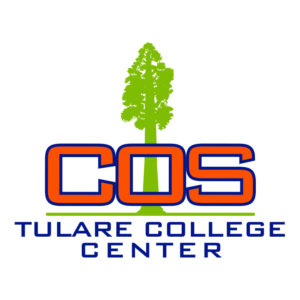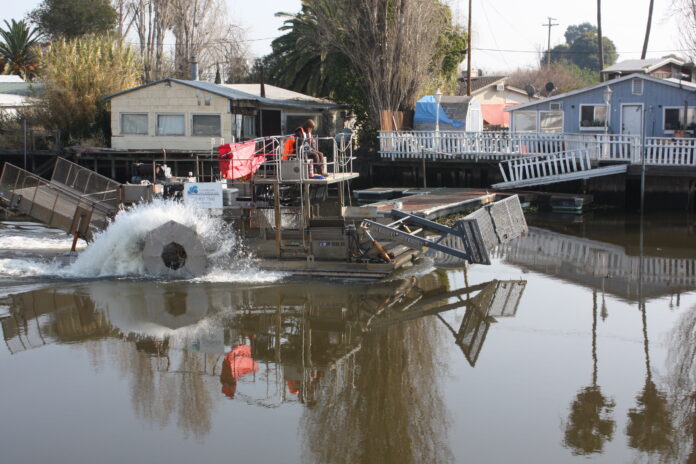 The San Luis Delta Mendota Water Authority held its board of directors meeting on Thursday, April 7, 2022 on Zoom. Good for them. Zoom is so simple compared to the other online meeting platforms. One click on the link and in moments I’m hanging out in some white-scape with the SLDMWA logo floating in the middle. The board has opted to continue meeting online under the 2020 state of emergency exemptions to the Brown Act due to nasty little bugs in the air.
The San Luis Delta Mendota Water Authority held its board of directors meeting on Thursday, April 7, 2022 on Zoom. Good for them. Zoom is so simple compared to the other online meeting platforms. One click on the link and in moments I’m hanging out in some white-scape with the SLDMWA logo floating in the middle. The board has opted to continue meeting online under the 2020 state of emergency exemptions to the Brown Act due to nasty little bugs in the air.
The Meeting
Chairman Cannon Michael called the meeting to order at 9:30am. Attorney Becca Akroyd called roll and there was a full quorum. There were no additions or changes to the agenda and there was no public comment. The consent calendar was passed. I like a good consent calendar. It can really move a meeting along and not bog down in minutia.
Today’s only action item was a resolution to allow the meeting to take place remotely next month. Only one action item, meaning the board must take action with a vote or table, is pretty rare for an agency of this size. I had hopes of a quick meeting.
Akroyd said the infection rate has fallen dramatically and staff recommends this be the last remote meeting as of now. Fortunately she said the Zoom feature will be maintained for the public. There were a few comments from directors who spoke in favor ending all remote meetings. Director William Bourdeau asked Akroyd if she’s aware of any legislative efforts to update the Brown Act. She said not at this time but she’s keeping an eye on that. Director Bill Diedrich said he appreciated this item. He said as comfortable as a Zoom meeting is, the direct personal contact has been beneficial. The way this was written not voting means resuming the in person only for the board. The Brown Act provisions allow a director to attend remotely as an individual are back in place. For a board member to attend remotely requires notices be posted and an address where he will be the so the public will know that. So, show up in Los Banos next month if you’re a director. The rest of us still have the option to stay home and attend in our pajamas.
legislative efforts to update the Brown Act. She said not at this time but she’s keeping an eye on that. Director Bill Diedrich said he appreciated this item. He said as comfortable as a Zoom meeting is, the direct personal contact has been beneficial. The way this was written not voting means resuming the in person only for the board. The Brown Act provisions allow a director to attend remotely as an individual are back in place. For a board member to attend remotely requires notices be posted and an address where he will be the so the public will know that. So, show up in Los Banos next month if you’re a director. The rest of us still have the option to stay home and attend in our pajamas.
Insurance
There was time for the board to pat staff on the back. Andy Sells representing the ACWA Joint Powers Insurance Authority said $118,179.00 is coming back to San Luis Delta Mendota because the staff and employees have done a remarkable job staying safe and participating in continuing education. Good for them.
Reports
- Scott Petersen reported the dam raising on the San Luis Reservoir is moving forward. He said there is $500,000 to $2 million in grant funding coming up for improved storage and other infrastructure needs. Peterson has always presented his reports with the skill of professional newscaster – clean, clear and faster than I can type.
So, here’s a summation; the feds are throwing billions of dollars at western water infrastructure, recycling, desal, dam safety and many other causes. It does include some funds for CVPIA. Is that good news or bad news? The Central Valley Project provides water to the Central Valley. The CVP Improvement Act takes water away from the Central Valley. You’ve heard the old joke that only in Washington DC would someone call the tax collection agency a service, as in IRS. Well, sounds like the same – only in DC would legislation that takes water away from the Central Valley be called an improvement act.
infrastructure, recycling, desal, dam safety and many other causes. It does include some funds for CVPIA. Is that good news or bad news? The Central Valley Project provides water to the Central Valley. The CVP Improvement Act takes water away from the Central Valley. You’ve heard the old joke that only in Washington DC would someone call the tax collection agency a service, as in IRS. Well, sounds like the same – only in DC would legislation that takes water away from the Central Valley be called an improvement act.
Petersen said on the state side DWR announced a $28 million chunk of change to address subsidence on the Delta Mendota Canal. Like the Friant Kern Canal and the California Aqueduct there needs to be repairs and refurbishing to the DMC after many decades of use.
Petersen said the State Board is likely to issue curtailment orders in mass and urged district keep their powder and the paperwork dry.
Next lobbyist Dennis Cardoza said earmarks are now known as community projects and requests need to be made yesterday. Each House member can submit five requests each and there is an April 15th deadline. Cardoza said the EPA is looking for applications for grants to fund projects that serve disadvantaged communities. He also said the drought in the West is getting a good deal of traction in the East Coast media. This is an opportunity and with the potential for worldwide food shortages now is the time to give thought to additional projects or the refinement of existing projects.
Bill Ball with Foley & Lardner said a lady with pull in the EPA (didn’t catch her name) has close relationships with California and had served in some capacity with the City of San Francisco. There is a farm bill coming up next year and this also is an opportunity to prepare for asks. Cardoza added there are now opportunities to meet in person with elected officials in DC. He said June and July would be a good time to do so.
Kristen Olsen with California Strategies reported on things in Sacramento. She said Governor Gavin Newsom is deferring much of the actions called for in his recent Executive Order to Secretary of Natural Resources Wade Crowfoot. Crowfoot has said there is a tremendous amount of pressure coming from all over the state to enforce more supply cutbacks. Unfortunately Senator Melissa Hurtado’s bill SB 1219 died yesterday but her message has been sent highlighting the harm being caused the State Water Resources Out of Control Board. Olsen also said Hurtado is in a race with Nicole Para and is out raising Para by a huge margin. Olsen said Assemblyman James Galliger is the new Republican Leader and he has a good background and dedication for water. So that’s good news. Olsen must have studied at the J. Scott School of Broadcasting because her delivery was clean, clear and quick.
Diedrich said there was full court press to get a powerful message in the Wall Street Journal to tell the drought story and its implications. Cardoza said this has some very positive results. There are bare shelves in the DC area evidently and that is getting noticed by Congress. He said Foley & Lardner is starting a LinkedIn service SLDM should participate in. Ball said Mike Wade is doing a good job as well. Ball also said the WSJ is the most read newspaper outside the Beltway.
Executive Officers Report
Remember earlier when I had hopes for a quick meeting? Wrong. Executive Officer Federico Barajas began by asking Frances Mizuno to update the San Luis Transmission Project. She said the bond market has changed recently. This originally $317 million project was approved in October 2021 and the Western Area Power Authority and the US Bureau of Reclamation are negotiating and drafting a Project Development Agreement, a Memorandum of Understanding and a Transmission Services Agreement.
Memorandum of Understanding and a Transmission Services Agreement.
There’s an issue WAPA and the Bureau have decided they can’t pay for any rates not directly in service. I believe this means standby charges. That boogers up the funding in place. That includes problems with delays of construction which raises costs and there is a bond issue out there that needs to be paid. Robert Porr and Lora Carpenter with Fieldman Rolapp & Associates presented some options to deal with this situation. This meeting is being recorded so if you have a burning desire to swim deeply into bonding service options I suggest you review the recording. Best I can gather the worst case scenario will increase SLDM’s cost by $44 million and the cost of the project to more than half a billion dollars. Again, I urge you to consult the recording and packet materials for a more definitive analysis. I can say Diedrich expressed a collective frustration with Cal ISO and the Bureau.
analysis. I can say Diedrich expressed a collective frustration with Cal ISO and the Bureau.
Voluntary Agreements
Next on the agenda was an update on the Voluntary Agreements. The agreements were originally between the state and the districts with supplies from the tributary rivers that feed the San Joaquin River: the Merced, Tuolumne and Stanislaus Rivers. It is based on the myth if you send enough water through the Delta the habitat will self-correct. The State Board wants more water from the tributary rivers to flow unimpeded through the Delta. There are some benefits to this for some folks in Sacramento and the Bay Area. The increased flows will dilute the pollution being dumped into the Delta, the Carquinez Straight and the San Francisco Bay by the millions of people who inhabit that part of the world. Without those flows the communities would have to invest substantial amounts of money upgrading their wastewater treatment systems. Without increased flows salt water would intrude into the Delta and some estimates indicate in a drought year like this salt water from San Francisco Bay would make its way upstream as far as Sacramento like it used to naturally before any dams were built to provide storage.
increased flows will dilute the pollution being dumped into the Delta, the Carquinez Straight and the San Francisco Bay by the millions of people who inhabit that part of the world. Without those flows the communities would have to invest substantial amounts of money upgrading their wastewater treatment systems. Without increased flows salt water would intrude into the Delta and some estimates indicate in a drought year like this salt water from San Francisco Bay would make its way upstream as far as Sacramento like it used to naturally before any dams were built to provide storage.
As you might expect the districts with water rights on the tributaries believed the amount of additional water releases to be sent out to sea were too high. Further the Friant Division of the CVP was assured the amount of its water supplies reduced by the San Joaquin Restoration Program would be all the contribution required. The Voluntary Agreements, also known as the VA went off the rails when the City of San Francisco realized it would have to contribute part of its Hetch Hetchy reserves to the cause. This created such a roil Newsom kicked State Board Chair Felicia Marcus off the board.
Now the state has cobbled together a new VA with higher amounts of diversions to be sent out to sea. The higher ups in California’s government evidently now consider it alright to work with the federal government now that the presidency is held by a member of the same political party as the governor and majority of the legislature. So the state and federal agencies are now Voluntarily Agreeing to take more water from the tributaries, to quote Newsom, “Whether you like it or not.”
Barajas said San Luis Delta Mendota did not sign the VA. Akroyd said on March 29th there was a term sheet agreement with an eight year term signed by the government agencies. There will be a review in six years. The State Board would review to determine if the VA will go well with the Bay Delta Salmon efforts. There is a MOU that is none binding but commits the signers to working to move the VA forward. There is a provision that allows unimpaired flows from the tributaries to be required by the State Board.
Bourdeau said this looks much more like a taking of rights, an eminent domain action. Akroyd said the VA looks better than what the State Board has planned. She said since this called voluntary there is no taking and no compensation required. Bourdeau said the water rights on the tribs need to at the least be compensated. Barajas said if any member wants to sign on the VA MOU they can do so. Diedrich said his home board wants to know who else signs off before it would commit. Barajas said the VA is supposed to provide supply stability for eight years.
Next Barajas invited Michael Jackson from the Bureau to speak since Reclamation is involved in so many things. Jackson said the rescheduled water can’t be relied on to meet the 2022 contractual obligation or the public safety supply. He said the Health & Safety allocation went down slightly from 25 percent of average. He said the smaller cities such as Huron, Avenal and Kettleman City aren’t as much an issue on the CVP as Santa Clara. He said Santa Clara has had to drain Anderson Reservoir due to a dam safety issue. That’s jacked up their supplies.
Jackson also spoke with SLDM members about a pump back system. The State Board has conditioned its approval of a temporary emergency petition on supplies only for fish and public safety. He said it looks like no more than one pumping unit running at the Jones Plant between now and September. He said San Luis Reservoir has about 74,000 a/f on the federal side if I understood. He said there should be 300,000 a/f at this point in time.
Jackson said releases from Friant Dam started on April 1st to meet the Bureau’s Exchange Contractors obligation. He said there will be no more water sent downstream than can be held at the Mendota Pool for efficiency’s sake. The Exchange Contractors and Friant are giving input on this. There is also a statutory commitment for the wildlife refuges.
The system down the SJR has been charged so there isn’t a large channel loss, at least as not as large as it could be. Based on historical records there is a 25 percent loss expected. Jackson said there was already a plan to release 240,000 a/f, representing a 15 percent allocation to Friant. That was announced in February. It sounds like that could change.
Diedrich thanked Jackson for showing up without a helmet but he might need a flack jacket. Diedrich asked him is there a possibility of a transfer from the state side to the federal side in San Luis and Friant could send water to the state? That might have a savings in channel loss. Diedrich also asked if there is a bottleneck on the SJR, stating it would have to be downstream of the Eastside Bypass.
Jackson said the temporary emergency petition was for cold water storage behind Shasta and Folsom Dams. He said there isn’t any provision to increase any pumping from Jones. He said as for Friant moving water down to Arvin Edison or to the Cross Valley Canal could cost $300,000 because of the costs charged by the Kern County Water Agency and other entities for recharge and recovery costs and conveyance/channel loss. Friant is looking to see if there would be any savings or benefits in sending water to the state that way.
and Folsom Dams. He said there isn’t any provision to increase any pumping from Jones. He said as for Friant moving water down to Arvin Edison or to the Cross Valley Canal could cost $300,000 because of the costs charged by the Kern County Water Agency and other entities for recharge and recovery costs and conveyance/channel loss. Friant is looking to see if there would be any savings or benefits in sending water to the state that way.
Diedrich said keep the focus on the problem, statewide water management. He said comments have been out there about moving water down the SJR and said he is farming on the Friant side also. He urged everyone to not shoot arrows at each other and focus on fixing the problem in Sacramento and the Delta. That is where the harm to farming families is coming from. Bourdeau thanked Jackson for answering questions.
Barajas said there will be a coordination call tomorrow and there are similar calls SLDM members can participate in. He also asked the directors to provide sexual harassment and ethics training certificates to staff.
COO Report
Chief Operating Officer Pablo Arroyave gave his report saying there are weekly calls with the Cooperating Operations Agreements on Fridays. He said Jones will be down to one pump and if that happens all summer long there wont be a need for a pump back program. But things can go downhill quick in a year like this and the equipment will be ready just in case to move SLR water to upstream members on the DMC.
He said there is a lot of work to be done at the state O’Neal Pumping Plant so they are coordinating with DWR on this. The Mendota Pool is in Fresno County and he’s working with them on aquatic weed problems.
Water Forecast
Tom Boardman reported things are dismal at Shasta. Without any more storms inflow’s going to peak right away. There is a small storm coming to Northern California next week for what that’s worth. There is 630,000 a/f at Folsom and the snowpack on that watershed is at 33 percent of normal. The Bureau’s latest forecast was in February and the March forecast has not come out yet. The Bureau was hoping a good supply at Folsom would help with reduced Shasta releases. He doesn’t expect the February forecast to stay current. Without some odd storms there won’t be more than one pump between now and the fall. There is only 100,000 a/f available from SLR right now. He said Friant’s option of moving 100,000 a/f to the state through Kern County isn’t a sure thing. There is the option of moving more water down the SJR but there is a bottleneck as described. I think what Boardman was saying is this a very unsure time in California water operations.
moving 100,000 a/f to the state through Kern County isn’t a sure thing. There is the option of moving more water down the SJR but there is a bottleneck as described. I think what Boardman was saying is this a very unsure time in California water operations.
Other Reports
Mike Wade from California Farm Water Coalition said a press release on the DWR funding agreement was released today. There are legislative tours being set up. The media monitor is successful and there is a daily distribution. He said they worked with the Klamath Basin and the Farm Water Coalition to develop and pay for an ad in the Wall Street Journal and it has proved very successful. He said folks who visit the landing page associated with ad has an average time of four minutes. That’s a lot. Diedrich praised Wade for doing work during his vacation and that Mrs. Wade needs to be recognized.
Director John Varela said May 2-6th will be the ACWA Conference in person in Sacramento and urged folks to attend. There is now a very good agricultural committee involved.
Petersen said the SJ Valley Water Blueprint is working on strategy and will meet to further that goal later this month. A poll was sent out and feedback will be used to help in developing said strategy. The SJ Valley Collaborate Action Plan has a new May 24th release date as final hiccups are ironed out. Can you iron a hiccup?
The meeting then went into closed session at 12:05pm and that was that.
DISCLAIMER OF RESPONSIBILITY; Waterwrights strives to provide clients with the most complete, up-to-date, and accurate information available. Nevertheless, Waterwrights does not serve as a guarantor of the accuracy or completeness of the information provided, and specifically disclaims any and all responsibility for information that is not accurate, up-to-date, or complete. Waterwrights’ clients therefore rely on the accuracy, completeness and timeliness of information from DAW entirely at their own risk. The opinions expressed in this report are those of the author and do not represent any advertisers or third parties.
and specifically disclaims any and all responsibility for information that is not accurate, up-to-date, or complete. Waterwrights’ clients therefore rely on the accuracy, completeness and timeliness of information from DAW entirely at their own risk. The opinions expressed in this report are those of the author and do not represent any advertisers or third parties.
ALL RIGHTS RESERVED. Copyright 2022 by WaterWrights.net/DAW
SAN LUIS & DELTA-MENDOTA WATER AUTHORITY was established in January of 1992 and consists of approximately 2,100,000 acres of 29 federal and exchange water service contractors within the western San Joaquin Valley, San Benito and Santa Clara counties. The governing body of the Authority consists of a 19-member Board of Directors classified into five divisions with directors selected from within each division. The main conveyance is the Delta-Mendota Canal that delivers approximately 3,000,000-acre feet of water within the Authority service area. Of this amount, 2,500,000-acre feet are delivered to highly productive agricultural lands, 150,000 to 200,000-acre feet for municipal and industrial uses, and between 250,000 to 300,000 acre-feet are delivered to wildlife refuges for habitat enhancement and restoration.
Board – Chairman: Cannon Michael,
Staff – Executive Director: Federico Barajas, COO: Pablo Arroyave, Attorney: Becca Ackroyd, Director of Water Policy: J. Scott Pedersen
Email: youtellus@sldmwa.org 209/826-9696
P.O. Box 2157 Los Banos, CA. 93635
































